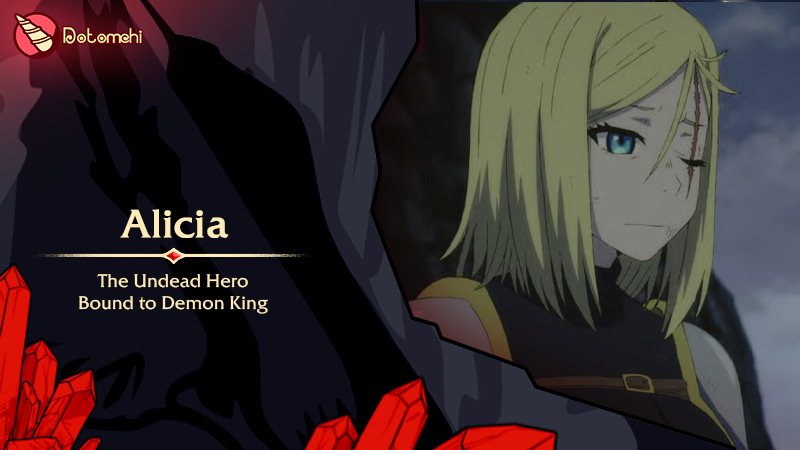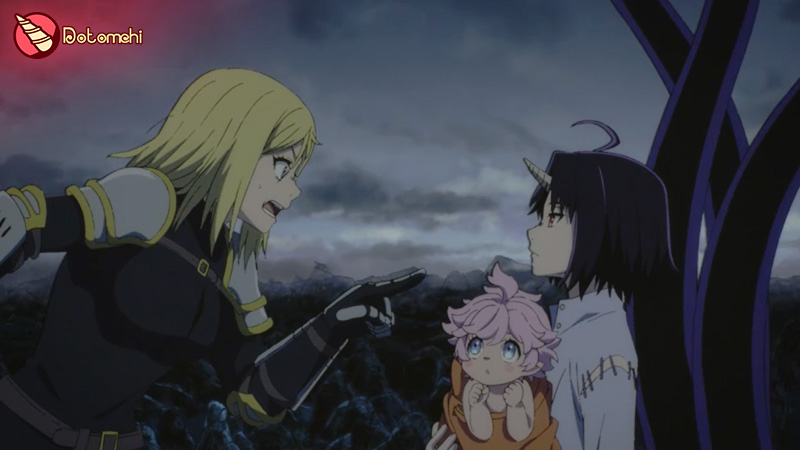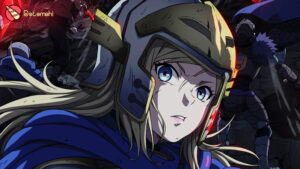Review of Alicia – The Undead Hero Bound to Demon King

Alicia’s transformation from a valiant hero to an undead servant bound by the Dark Beast King is one of the most compelling arcs in Clevatess. Her journey—driven by desperation, devotion, and inner conflict—is not only heart-wrenching but philosophically rich. In this deep-dive character review, we explore how Alicia’s arc adds emotional weight and narrative complexity to the dark fantasy tapestry of this anime.
Overview
This section lays the groundwork for understanding Alicia’s role, abilities, and creation—establishing credibility by presenting key facts about production and voice talent.
Let’s start with the context surrounding Alicia’s character and the anime she inhabits.
- Anime Title: Clevatess: Majū no Ō to Akagō to Shikabane no Yūsha
- Character Focus: Alicia – once a hero, now undeath-bonded to Clevatess
- Genre: Dark Fantasy · Psychological Drama · Supernatural Action
- Director: Kiyotaka Taguchi
- Series Composition / Writer: Keigo Koyanagi
- Original Manga Author: Yūji Iwahara
- Japanese Voice Actor: Haruka Shiraishi (Alicia)
- English Dub Voice: Katie Wetch (Crunchyroll dub)
- Key Relationships: Alicia’s ties to Clevatess (Clen), Luna (the royal baby), and the fallen heroes she once fought alongside

Summary of Alicia’s Storyline
Before delving into analysis, here is a concise narrative of Alicia’s journey—spotlighting pivotal events that define her transformation.
Alicia is introduced in Episode 1 as one of thirteen heroes slain by the Demon King. Her death appears definitive until Clevatess resurrects her with his dark blood to act as Luna’s caretaker. Now undead, Alicia is caught between her duty and her conscience as she protects the infant princess—defying her destiny and risking damnation.
In Episode 2, Alicia’s inner turmoil deepens when she wakes bound in shackles and thrust into the wilderness. She clings to her honor while forced into servitude, repeatedly testing the moral boundaries of survival and loyalty.
Episode 3 sees Alicia thrown from a collapsing bridge into watery depths—her body shattered but unreleased. The undead hero endures excruciating pain, yet refuses to let Luna lose her protector. Her suffering underscores the strength of her spirit, even in defiance of natural death.
Episode 4 teases a resurrected Alicia taking agency—her undead form appearing more awakened than enslaved. Though still bound to Clevatess’s power, her piercing gaze signals defiance and growing independence.
A poignant flashback panel shows Alicia training as a hero—now redirected by fate.
Detailed Review
Here’s why Alicia’s journey stands out—from narrative structure to voice performance and technical artistry.
Script & Content
Alicia’s story is anchored by writing that respectfully balances her heroism with tragic servitude. The script’s brilliance lies in its layered dialogues and internal monologues, especially when Alicia debates whether her resurrection is salvation or curse.
She frequently recalls her oath to protect—we hear echoes of her former nobility contrasted with her undead obedience. When she hesitates or shows compassion, the writing invites viewers to question how much of a hero remains when life itself is stolen.

Cast’s Performance
Voice acting makes Alicia’s arc emotionally resonant.
- Haruka Shiraishi delivers nuance—her voice wavers between steely determination and vulnerable pain, particularly in scenes where Alicia comforts Luna.
- Katie Wetch, in the English dub, mirrors that fragility and simmering strength, drawing empathy through controlled despair.
These performances power Alicia’s emotional core and humanize her supernatural suffering.
Images & Sound
Animation and audio work in tandem to amplify Alicia’s inner world.
- Visual Design: Alicia’s undead eyes—ghostly, sad, yet focused—are central to her visual identity. Rotting flesh details, chained wrists, and armor dented from battles communicate her trauma.
- Lighting: Scenes alternate between fiery night camps and moonlit ruins, echoing Alicia’s internal conflict.
- Sound Effects: Creaking chains, shallow breaths, muted heartbeats—every audio cue maps to her struggle between life and death.
- Score: Soft piano themes underscore her introspective scenes, shifting to somber orchestration during moments of resolve or martial conflict.

Conclusion
Alicia’s transformation from hero to undead guardian is arguably the most emotionally potent thread in Clevatess. Written with depth and performed with vulnerability, her arc raises profound questions: Is her undeath true kindness, or eternal torment? Does sacrifice redeem or consume?
Through Alicia, Clevatess explores themes of duty, identity, and the blurred line between life and undying servitude. Her presence enriches the anime’s philosophical and emotional stakes, inviting viewers to ponder what sacrifice truly means.
For those who love flawed heroes and moral complexity, Alicia is a character who lingers—both in story and in the heart.
Author:Tobi, anime critic specializing in dark fantasy and character psychology. With deep research into manga roots and performance craft, this review provides authoritative insight into Alicia, one of Clevatess’s most emotionally compelling figures.
